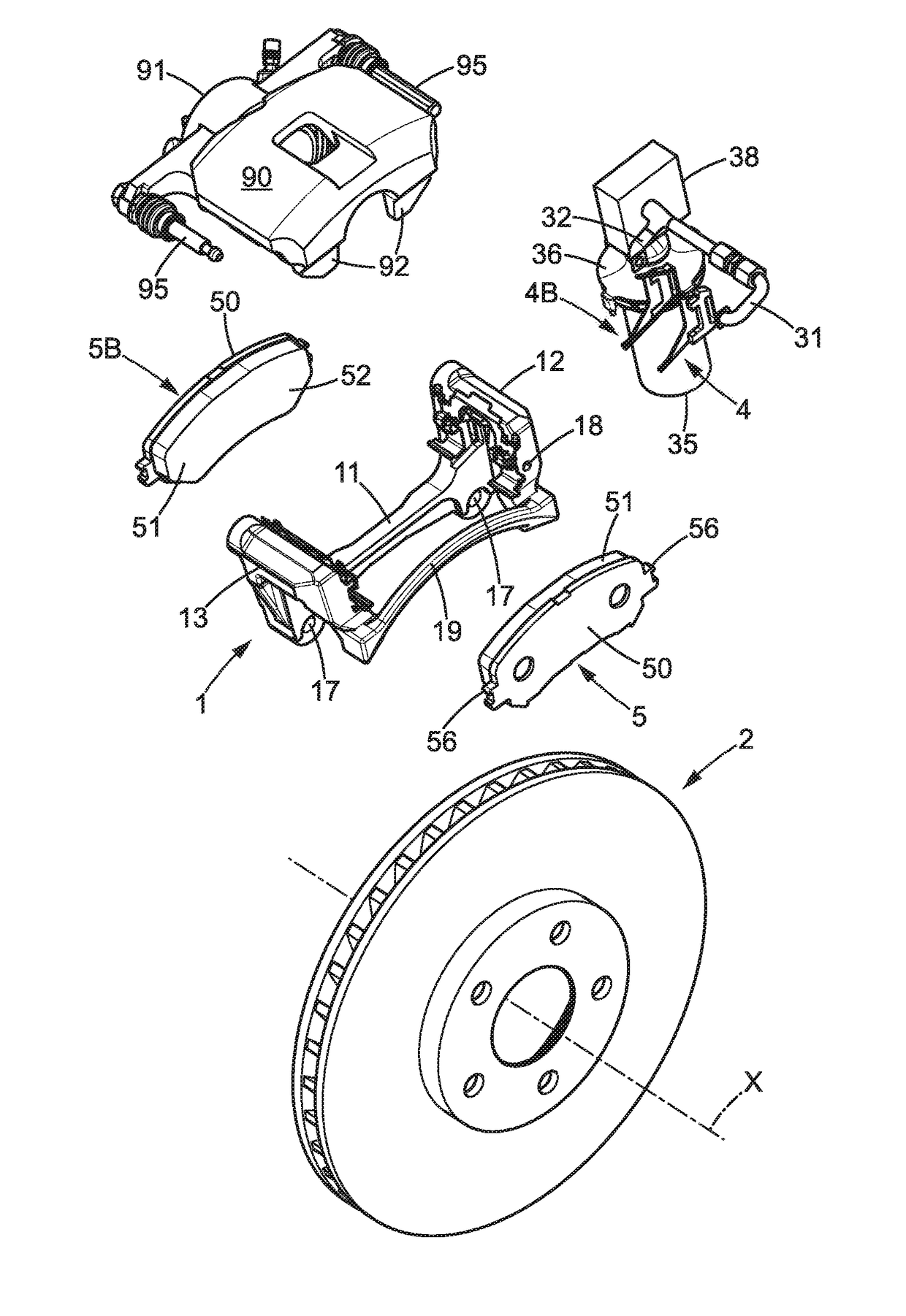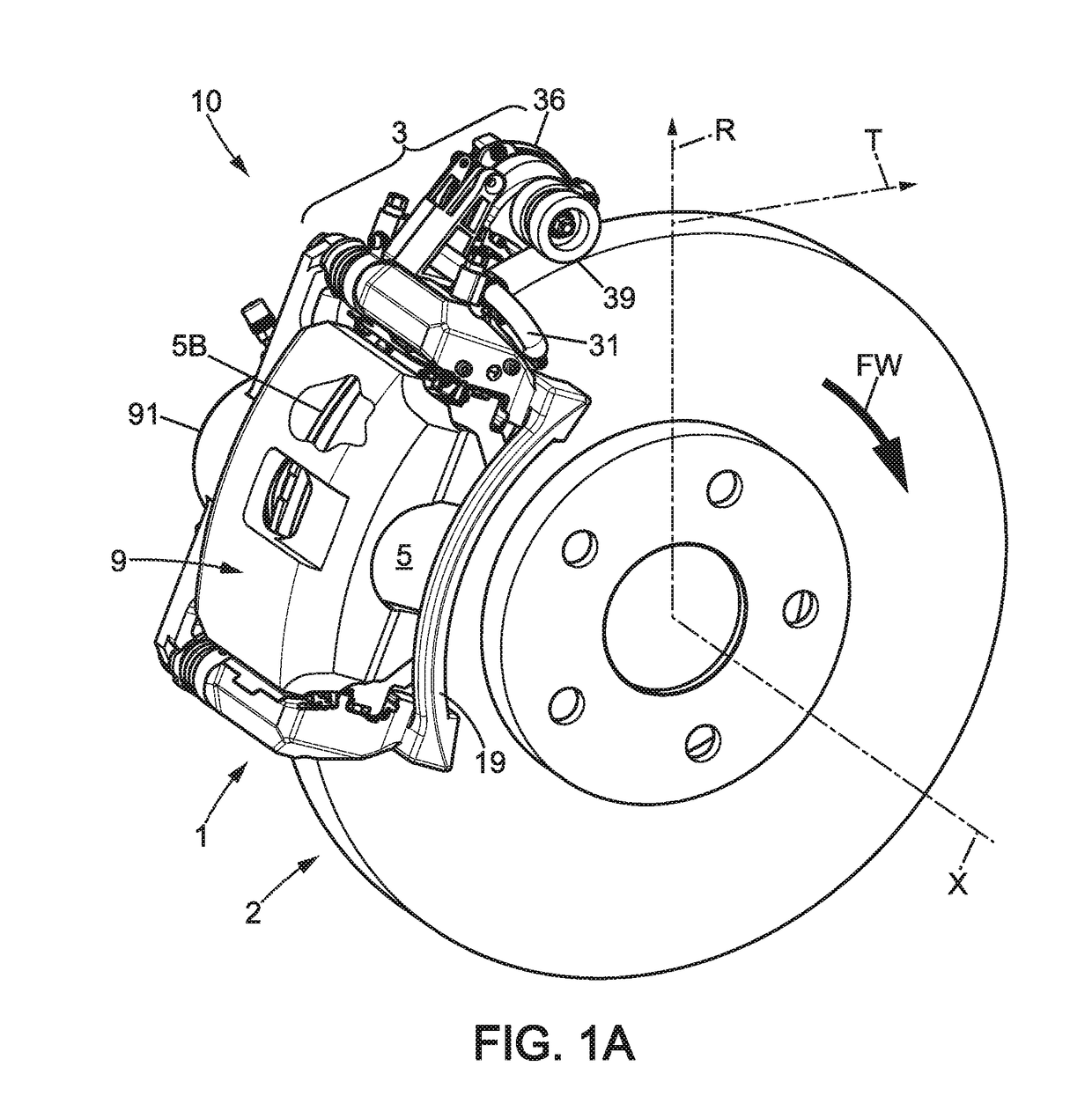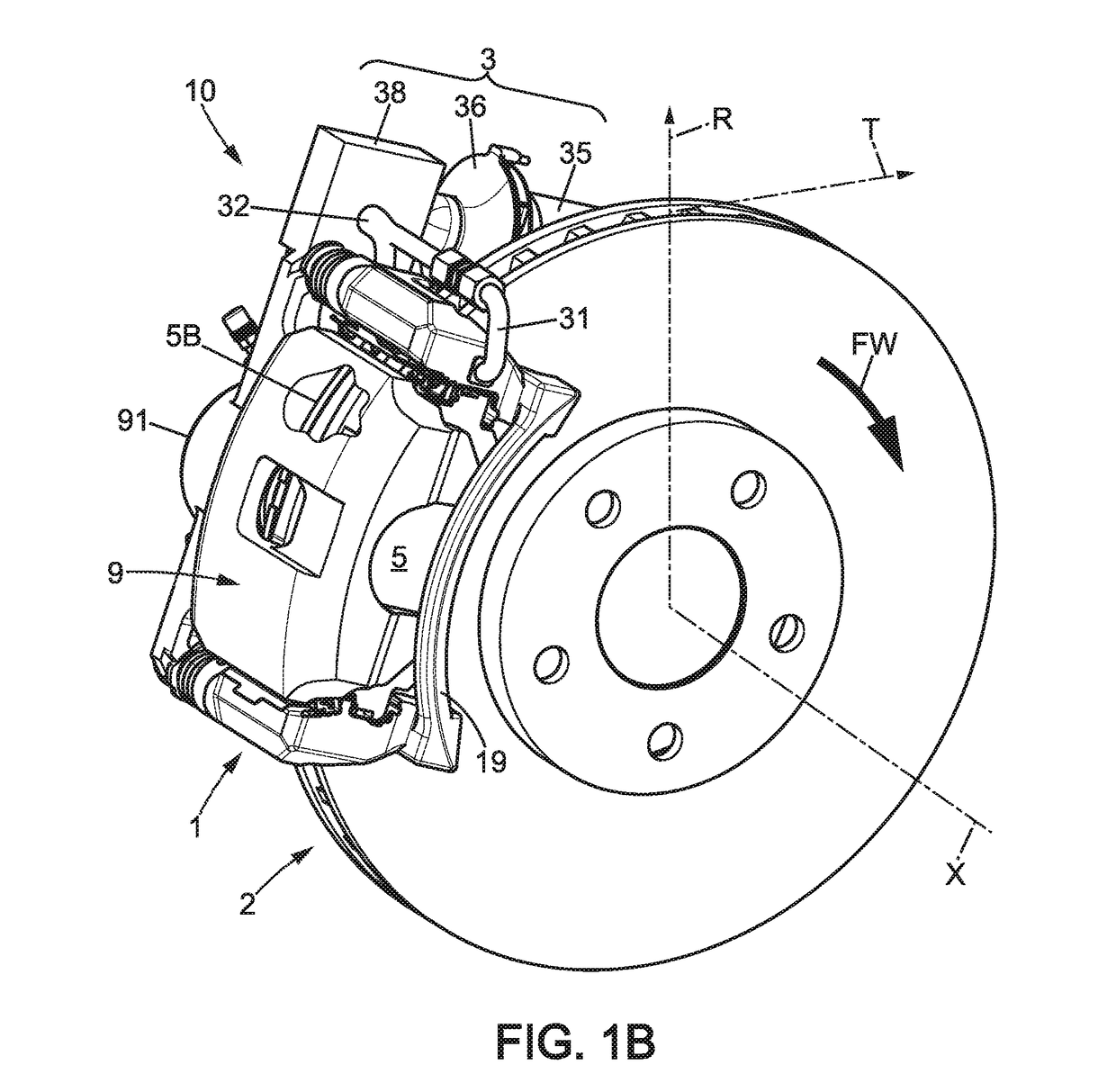Particle Trapping Brake Assembly With Deflector
a technology of brake assembly and deflector, which is applied in the direction of axially engaging brakes, braking systems, mechanical devices, etc., can solve the problem of unoptimum capture rate, and achieve the effect of increasing the capture ra
- Summary
- Abstract
- Description
- Claims
- Application Information
AI Technical Summary
Benefits of technology
Problems solved by technology
Method used
Image
Examples
first embodiment
[0036]FIG. 1A shows a brake assembly 10 according to the invention which relates to a disc brake configuration. Such a disc brake configuration is very common in automobiles, utility vehicles, heavy-duty vehicles, and buses, as well as in railway rolling stock and two-wheeled vehicles. In this configuration, the braking action is applied to a rotor called a “disc” that is integral with the wheel rim but distinct from it.
[0037]There are increasing numbers of particles emitted by braking systems due to the increase in vehicular traffic, especially in urban areas. Medical studies confirm the harmfulness of these particles to the respiratory system and to health in general. It is therefore important to substantially reduce the release of these particles into the ambient environment, which is the object of the invention.
[0038]Although efforts are being made to use friction-free braking systems where possible, such as regenerative electric braking or eddy current braking, it turns out tha...
second embodiment
[0074] represented in FIGS. 1B and 4B, an electric motor 35 is used as the means for driving the impeller. This electric motor is controlled by a control unit (not shown) comprising software configured to activate the electric motor for example based on driver braking action on the brake pedal.
[0075]According to one variant (not shown), one uses a negative pressure generating element in a centralized unit connected by pipes to each of the brake assemblies.
[0076]In the example illustrated, the deflector 4 is a separate part made of material such as cast aluminum.
[0077]In the two embodiments illustrated, the deflectors 4, 4B are rigidly mounted with respect to the caliper bracket 1. Since the position of the caliper bracket relative to the disc is very precise, the position of the deflectors 4, 4B is properly maintained relative to the disc regardless of the degree of wear of the pad; it is thus possible to obtain a properly maintained dimension H and dimension K (see above), regardle...
PUM
 Login to View More
Login to View More Abstract
Description
Claims
Application Information
 Login to View More
Login to View More - R&D
- Intellectual Property
- Life Sciences
- Materials
- Tech Scout
- Unparalleled Data Quality
- Higher Quality Content
- 60% Fewer Hallucinations
Browse by: Latest US Patents, China's latest patents, Technical Efficacy Thesaurus, Application Domain, Technology Topic, Popular Technical Reports.
© 2025 PatSnap. All rights reserved.Legal|Privacy policy|Modern Slavery Act Transparency Statement|Sitemap|About US| Contact US: help@patsnap.com



